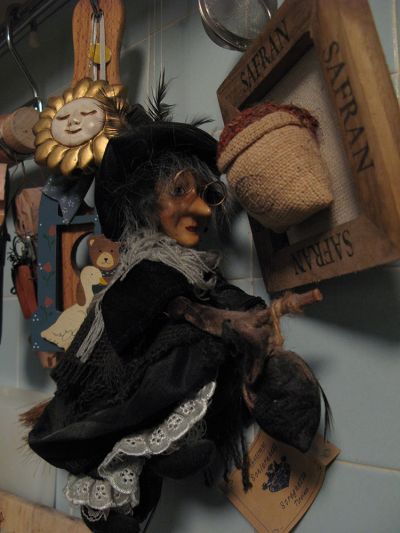La Befana è nell’immaginario collettivo un personaggio con l’aspetto da vecchia che porta doni ai bambini buoni la notte tra il 5 e il 6 gennaio. La sua origine risale a tempi antichissimi e discende da tradizioni magiche precristiane che si fondono con elementi folcloristici e cristiani. Secondo il racconto popolare, infatti, i Re Magi diretti a Betlemme per portare i doni a Gesù Bambino, non riuscendo a trovare la strada, chiesero informazioni ad una vecchia. Malgrado le loro insistenze affinchè li seguisse per far visita al piccolo, la donna non uscì di casa per accompagnarli. In seguito, pentitasi di non essere andata con loro, dopo aver preparato un cesto di dolci, uscì di casa e si mise a cercarli. Non trovandoli, si fermò ad ogni casa lungo il cammino, donando dolciumi ai bambini che incontrava, nella speranza che uno di essi fosse il piccolo Gesù. Da allora girerebbe per il mondo, facendo regali a tutti i bambini, per farsi perdonare.
Many culturally rich tales and fables give life to Italian celebrations, including Befana the Christmas witch. Similar to the popular holiday figure of Santa Claus, Befana is a kindly old witch who visits homes and gives fruits, candies and presents to well-behaved families on January 5 during the Eve of the Epiphany.
Befana’s legend takes place many years ago during Jesus’ birth. It is said that the Magi who visited Jesus asked Befana for directions to him and when they asked her to come with them, she declined due to her busy schedule. Befana ends up changing her mind, but she is unable to find the Magi. Instead, she goes on a search for Jesus on her own to give him gifts. Now she gives gifts to all good children who she visits on the Eve of the Epiphany.
The story of Befana sprouted from Italian culture many centuries ago, but some believe she has pagan roots instead. She shares similarities to a Roman goddess known as Strenua who represents the new year. Another tale in Russia holds a resemblance in which an old woman dubbed Babushka decides not to travel with the Magi as well. Some of Befana’s own origins are also debated. Another more upsetting fable involves Befana losing her son and she gifts his belongings to Jesus in grief. She is then blessed for her kindheartedness.
Italian families celebrate this holiday similarly to how one would celebrate Christmas. Befana rides on her donkey or her broom on the Eve of the Epiphany and gives candy and gifts to good children during the night. Bad children are said to get coal, onions, garlic, or no gifts at all. Snacks are often left out for Befana, including wine and sausage.
Symbols for Befana include honey, figs and leaves. She is typically depicted as red-nosed and hunched-back and riding either a broom or a donkey. Her relationship with animals is seen as sacred, as exemplified by her interaction with the donkey. Her name is said to be derived from the Italian word epifania, or “epiphany.”
This holiday is spreading from Italy to other countries. Each location celebrates Befana a little differently, either with stories, songs, music, or festivals that are attended by tens of thousands of people. Costumes representing the kindly old witch can also be worn by women, men and children to honor her presence. Whether believing in Santa Claus or Befana the Christmas witch, children around the world are in for a wonderful surprise this winter.



